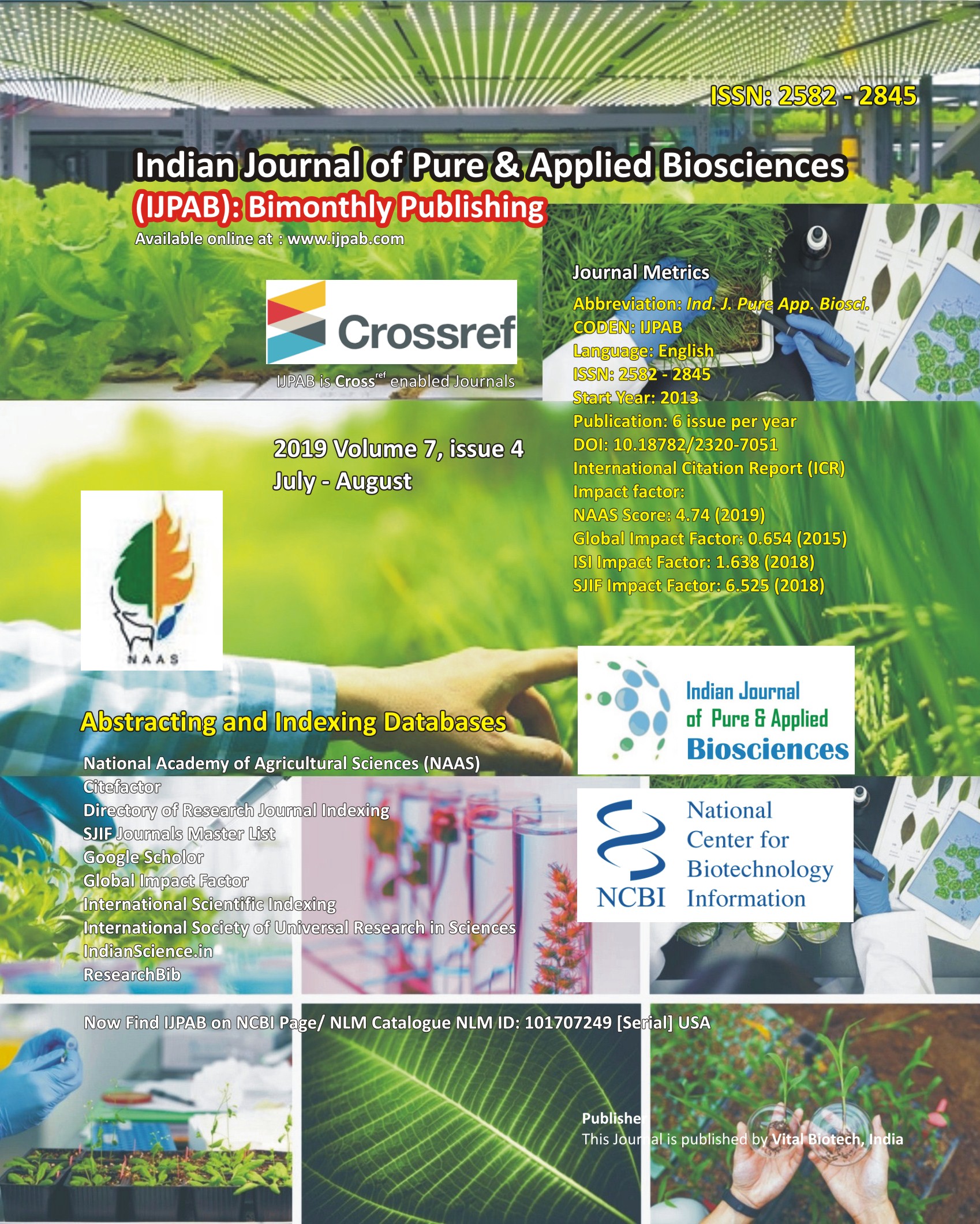
-
No. 772, Basant Vihar, Kota
Rajasthan-324009 India
-
Call Us On
+91 9784677044
-
Mail Us @
editor@ijpab.com
Indian Journal of Pure & Applied Biosciences (IJPAB)
Year : 2019, Volume : 7, Issue : 4
First page : (8) Last page : (22)
Article doi: : http://dx.doi.org/10.18782/2320-7051.7639
Botryotinia ricini (Gray Mold); A Major Disease in Castor Bean (Ricinus communis L.) – A Review
Akwasi Yeboah1, Jiannong Lu1, Kwadwo Gyapong Agyenim-Boateng1, Yuzhen Shi1, Hanna Amoanimaa-Dede1, Kwame Obeng Dankwa2 and Xuegui Yin 1,*
1Department of Crop Breeding and Genetics, College of Agricultural Sciences, Guangdong Ocean University, Zhanjiang 524088, China
2Council for Scientific and Industrial Research - Crops Research Institute, Kumasi, Ghana
*Corresponding Author E-mail: yinxuegui@126.com
Received: 12.07.2019 | Revised: 18.08.2019 | Accepted: 24.08.2019
ABSTRACT
Castor is an economically important oilseed crop with 3-5% increase in demand per annum. The castor oil has over 700 industrial uses, and its oil is sometimes considered as an alternative for biodiesel production in several countries. However, its worldwide demand is hardly met due to hampered production caused by biotic stress. One of the most critical biotic factors affecting castor production is the fungal disease, Botryotinia ricini. The study of the B. ricini disease is very essential as it affects the economic part of plant, the seed, from which castor oil is extracted. Despite the devastating harm caused by B. ricini in castor production, there is limited research and literature. Meanwhile, the disease continues to spread and destroy castor crops. The disease severity is enhanced by an increase in relative humidity, temperature (around 25ºC), and high rainfall. Suggested control of the disease includes timely planting, breaking of infected panicles, wide planting interval, use of resistant varieties, and seed treatment with fungicides. Use of resistant cultivars is most appropriate against the gray mold disease, however, only few cultivars have been identified. Marker-assisted selection, a cost effective and fast method of identifying resistant cultivars and ultimately resistant genes has not been employed to date. This review investigates the current status of the gray mold disease in castor production and also discusses some effective control measures.
Keywords: Gray mold disease; Castor; Botryotinia ricini; Amphobotrytis; Capsules.
Full Text : PDF; Journal doi : http://dx.doi.org/10.18782
Cite this article: Yeboah, A., Lu, J., Agyenim-Boateng, K. G., Shi, Y., Amoanimaa-Dede, H., Dankwa, K. O. & Yin, X. (2019). Botryotinia ricini (Gray Mold); A Major Disease in Castor Bean (Ricinus communis L.) – A Review, Ind. J. Pure App. Biosci. 7(4), 8-22. doi: http://dx.doi.org/10.18782/2320-7051.7639

